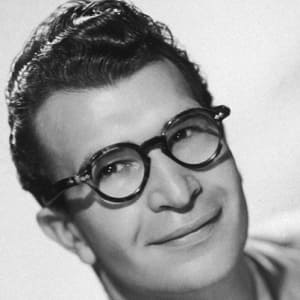
Paul Samuelson
Paul Samuelson used mathematics to formulate influential economic theories and, in 1970, became the first American to win the Nobel Prize in Economic Sciences.
Synopsis
Born in Gary, Indiana, on May 15, 1915, Paul Samuelson became a groundbreaking economist through his use of mathematical principles. He wrote the best-selling textbook Economics in 1948, and was an adviser to two U.S. presidents. In 1970, Samuelson became the first American to win the Nobel Prize in Economic Sciences. A longtime professor at MIT, he died on December 13, 2009, in Belmont, Massachusetts.
Early Years and Education
Paul Anthony Samuelson was born on May 15, 1915, in Gary, Indiana, to parents Frank and Ella. After his father, a pharmacist, encountered financial difficulties in the years following World War I, the family moved to Chicago, Illinois.
Samuelson entered the University of Chicago as a 16-year-old, later claiming that he was "born as an economist on January 2, 1932," the first day of a college lecture on 18th century British economist Thomas Robert Malthus. After graduating with his bachelor's degree in 1935, Samuelson began his graduate studies at Harvard University, receiving his master's degree in 1936 and Ph.D. in 1941.
Groundbreaking Theories
Samuelson became engrossed by the discrepancy between economic theories and real-world applications in the wake of the Great Depression, and sought to use mathematics to hammer home unifying principles.
Among his achievements were the development of the multiplier-accelerator model, which captured the inherent tendency of market economies to fluctuate, and the correspondence principle, which linked the behavior of individuals and the aggregate stability of an entire economic system.
Samuelson is perhaps most famous for his formation of neoclassical synthesis, which merged the neoclassic macroeconomic belief in the powers of the free market with British economist John Maynard Keynes's arguments for government intervention. Samuelson demonstrated that free-market theories were applicable during times of economic stability, but government measures, such as tax cuts, were otherwise needed to overcome inefficiencies and provide stimulation.
Samuelson's first book, Foundations of Economic Analysis, based on his dissertation, earned him the John Bates Clark Medal by the American Economic Association in 1947. However, it was his second book, Economics, published in 1948, that became his most famous written work. With its easy-to-digest explanations of neoclassical synthesis and other theories, it was reprinted in dozens of languages and became the world's best-selling textbook for nearly 30 years.
Work and Recognition
Named an assistant professor of economics at the Massachusetts Institute of Technology in 1940, Samuelson eventually became an institute professor during his longtime association with the university. He also served as a consultant for several government divisions over the course of his career, including the National Resources Planning Board, the Bureau of the Budget and the United States Treasury.
Samuelson became a trusted adviser to Senator John F. Kennedy, later advising the young president to push through tax cuts to help ward off a recession, and remained an important voice in Lyndon B. Johnson's administration. Recognized for his use of mathematics to provide clarity about market complexities, he became the first American to win the Nobel Prize in Economic Sciences in 1970.
Later Years and Legacy
From the late 1960s through the early '80s, Paul Samuelson debated economic viewpoints across from fellow former University of Chicago student Milton Friedman in Newsweek. During this period, The Collected Scientific Papers of Paul A. Samuelson was published over the course of five volumes.
Meanwhile, the highly renowned economist continued to influence generations of students at MIT, helping to reel in an all-star faculty that included Nobel Prize laureates Robert Solow, Franco Modigliani and Robert Merton.
Among the last generalists to make his mark across the economic spectrum, Samuelson contributed fundamental insights in consumer theory, welfare economics, international trade, finance theory, capital theory and macroeconomics. He died on December 13, 2009, in Belmont, Massachusetts.




